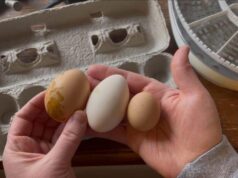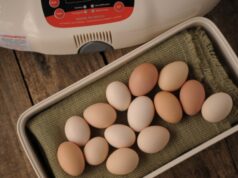When raising chicks, creating the ideal environment is crucial for their health and growth. One common issue that chicken enthusiasts face is maintaining the right humidity levels in the brooder. Signs of a too-dry brooder can lead to health problems in chicks, affecting their development and survival. This article will delve into these signs, helping you ensure your chicks thrive.

Understanding Brooder Conditions
Before we explore the signs of a too-dry brooder, it’s essential to understand what a brooder is and the conditions it should have. A brooder is a heated enclosure that provides shelter and warmth to young chicks until they grow feathers and can regulate their body temperature. The ideal brooder mimics a hen’s warmth and includes proper lighting, temperature, and humidity.
Importance of Humidity in Brooders
Humidity plays a vital role in a chick’s environment. While too much humidity can foster bacterial growth, too little can lead to dehydration and other health issues. Maintaining a balance is crucial to prevent the signs of a too-dry brooder from appearing.
Recognizing the Signs of a Too-Dry Brooder
Identifying the signs of a too-dry brooder can make a significant difference in the health of your chicks. Here are some critical indicators:
1. Dehydrated Chicks
One of the most apparent signs of a too-dry brooder is dehydration in chicks. Look for signs like sunken eyes, lethargy, and dry, flaky skin. Ensuring that water is always available and accessible can help mitigate this.
2. Feather Problems
Feathers that look brittle or have difficulty forming might indicate a lack of moisture. Chicks rely on adequate humidity to grow strong and healthy feathers.
3. Respiratory Issues
Chicks in a too-dry environment may develop respiratory problems. Coughing, sneezing, or labored breathing can all be signs of a too-dry brooder.
4. Behavioral Changes
Chicks may become more irritable or lethargic in a dry environment. If they huddle together excessively, it might be a sign that the brooder lacks the necessary humidity.
Maintaining Proper Humidity Levels
To prevent the signs of a too-dry brooder, maintaining the right humidity is essential. Here are some tips:
1. Use a Hygrometer
A hygrometer can help you monitor the humidity levels within the brooder. Aim for 50-60% humidity for optimal conditions.
2. Add Moisture
Consider adding a shallow pan of water inside the brooder to increase humidity. Ensure that it is placed safely and cannot be tipped over by the chicks.
3. Monitor Temperature
Temperature and humidity are closely related. Keeping the temperature consistent can help maintain humidity levels. Check out our guide on brooder maintenance for more tips.
Preventive Measures for a Healthy Brooder
Beyond maintaining humidity, there are other measures to ensure your chicks’ health:
1. Regular Cleaning
Keeping the brooder clean helps prevent disease. Learn more about cleaning a chick brooder effectively.
2. Proper Ventilation
While humidity is important, so is airflow. Proper ventilation prevents the buildup of harmful bacteria and keeps the air fresh.
3. Balanced Diet
Ensure your chicks have a balanced diet to support their growth. If they refuse to eat or drink, check our guide on what to do when chicks won’t eat or drink.
Conclusion
Recognizing and addressing the signs of a too-dry brooder is crucial for the health and development of your chicks. By maintaining the right humidity levels, ensuring proper ventilation, and keeping a clean environment, you can provide the best start for your chicks. For more detailed advice, visit this comprehensive guide on brooding chicks.

FAQs
1. How can I tell if my brooder is too dry?
Look for signs such as dehydrated chicks, feather issues, and respiratory problems. A hygrometer can help monitor humidity levels.
2. What is the ideal humidity level for a chick brooder?
The ideal humidity level for a chick brooder is between 50-60%.
3. Can a too-dry brooder affect chick growth?
Yes, a too-dry brooder can lead to dehydration, respiratory issues, and poor feather development, all of which can hinder a chick’s growth.
This article contains affiliate links. We may earn a commission at no extra cost to you.











